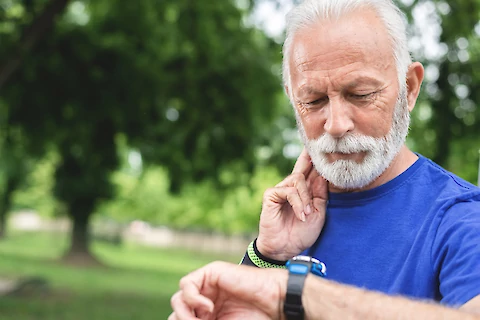
Our hearts are an essential part of our lives. Taking the time to keep our hearts healthy is worth the extra effort. So, how do you do it? One way of tracking heart health is by measuring your active and resting heart rates. These heart rates can provide crucial insights into how our hearts are performing.
Definition of Active and Resting Heart Rates
An active heart rate is the number of beats per minute (BPM) when your body is engaged in an activity that increases your heart rate. It is higher than a resting heart rate and monitored by wearing a chest strap, counting your pulse manually at the wrist, or using a fitness wearable.
A resting heart rate can also be measured in BPMs as it indicates how quickly you recover from exercise and physical activities where your breathing has become faster due to exertion. You can count yours by taking two fingers under one wrist bone on either side of your hand and then counting how many beats are felt while timed for 10 seconds before multiplying those numbers by six to get the number of heartbeats per minute.
Factors That Affect Heart Rate
Age, gender, fitness level, and medications can all affect blood pressure. Age is a particularly important factor when it comes to measuring your active and resting heart rates. Healthy heart rates may differ between genders as men tend to have higher active and resting heart rates than women due to naturally bigger hearts that pump blood faster and with greater force.
Average Active and Resting Heart Rates for Seniors
The average active heart rate for seniors is slightly lower compared to the National Optical Average (NNYA) because our hearts don't work as efficiently or pump as much oxygenated blood. According to research, the NNYA places an upper limit of 180 beats per minute while a healthy senior should typically stay around 135-160 BPM during activity.
When measuring your resting heart rate, aim for an average of 60-100 BPM. Any number below sixty could be indicative of certain diseases such as arrhythmia due to decreased blood flow. If you have frequent readings that are consistently higher than this range, it could either represent healthier signals from having exercised recently (but decreases rapidly following cooldowns). COPD and cancer may cause elevated rates in addition to some medications linked with increased risk factors too. Always consult your physician for personalized recommendations.
Senior Helpers Sunbury Offers Unique In-Home Care
It's important to regularly monitor your heart rate to maintain a healthy lifestyle. Keeping an eye on the numbers can help you keep tabs on any potential chronic conditions, medications, fitness levels, and age-related health issues that influence your overall well-being. Seniors can benefit from making sure their active and resting heart rates are within healthy ranges. Measuring these numbers allows us to take control of our cardiac health so we know what should be considered normal and when it's time to see a doctor. Senior Helpers Sunbury is here for you and all of your home care needs! Contact Senior Helpers Sunbury today to learn more about our services in Lebanon, Lewistown, Danville, Selinsgrove, Milton, and Lewisburg.